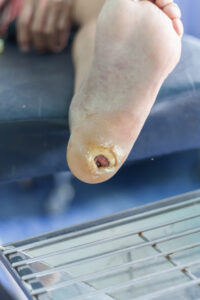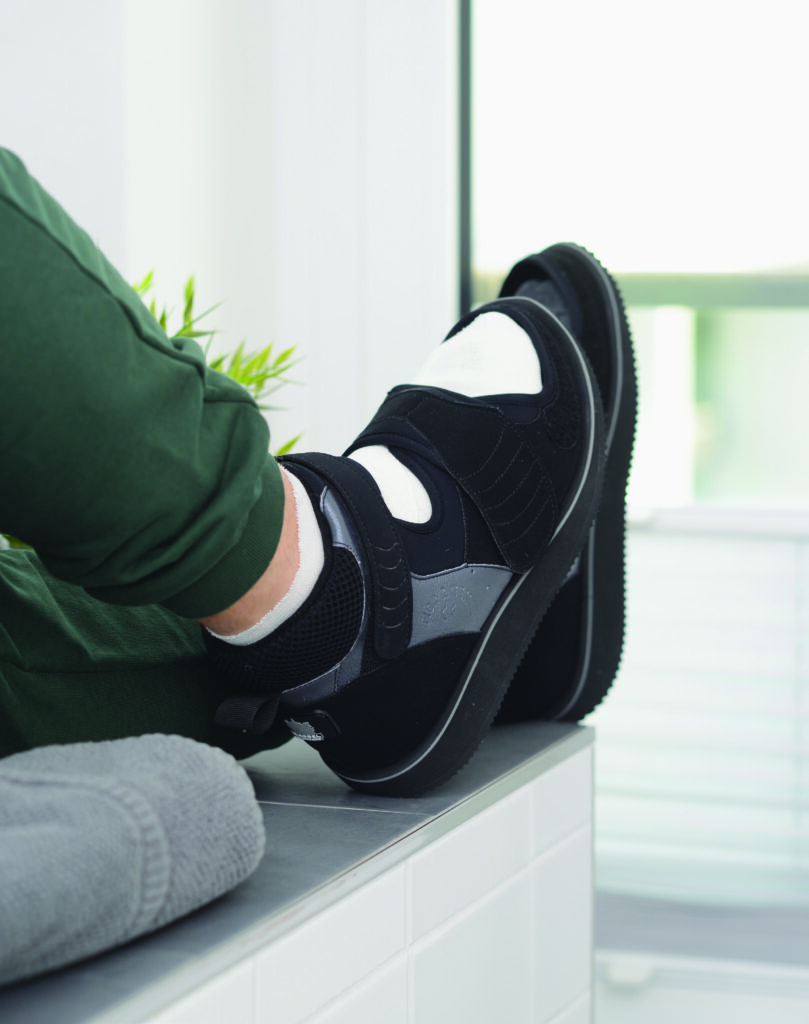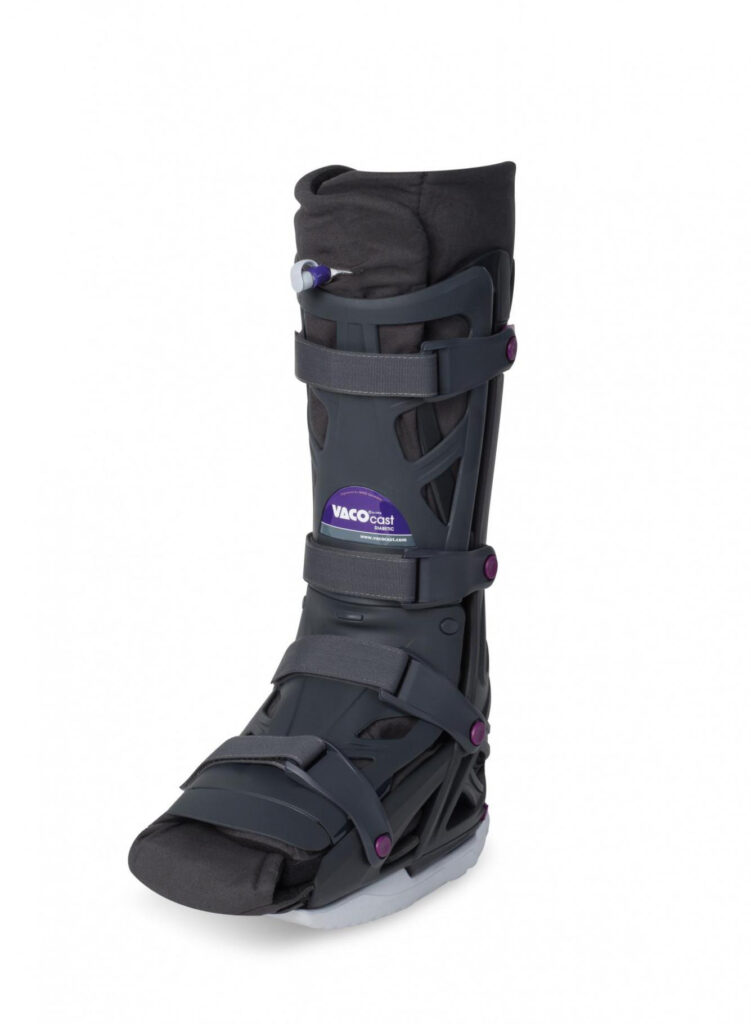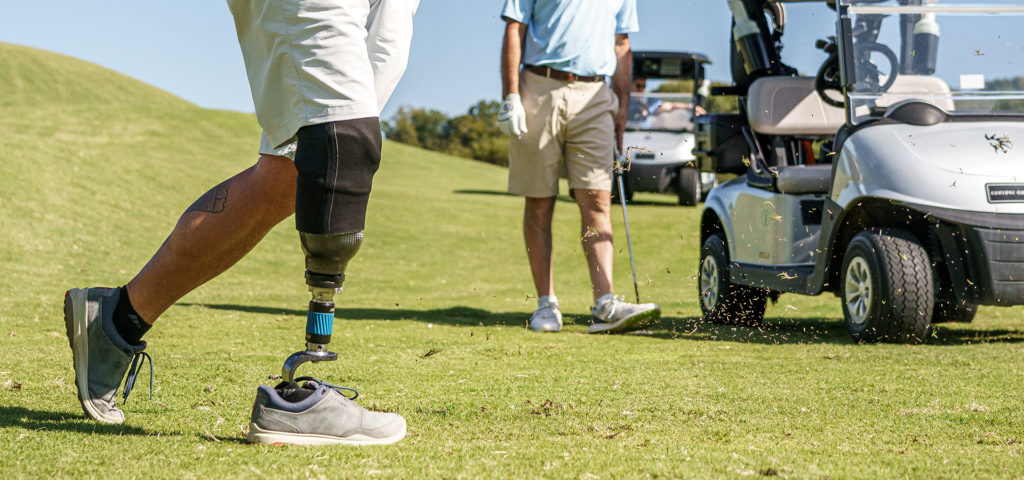How Orthotists and Prosthetists are Involved in Treating Diabetic Patients
People often ask how orthotists and prosthetists are involved in treating patients who have diabetes. As a condition that is primarily related to glucose levels in the blood. Having diabetes can lead to an array of health complications if not managed effectively.
Diabetes is a medical condition where the body cannot maintain healthy glucose levels in the blood. When you eat food that contains glucose, your pancreas produces a hormone called ‘Insulin’ that converts glucose from your food into energy. When your body cannot maintain healthy glucose levels, you could have diabetes, a non-curable medical condition that can be serious if not managed correctly.
Type 1 Diabetes
Type 1 diabetes is caused by an autoimmune condition where the body attacks and damages the pancreas and insulin cannot be produced as a result.
Type 2 Diabetes
Type 2 diabetes is caused by lifestyle factors and associated with obesity. It can be caused by the pancreas wearing out by overproducing insulin over a long period of time or if the pancreas has the ability to produce insulin but the muscles and liver prevent the insulin from working. About 1.7 million Australians have diabetes. 10% have type 1 diabetes and 90% of type 2 diabetes. If the glucose is not broken down, it will remain circulating in your blood. When sugar is present in the blood it is called glycemia, and if there is too much glucose in the blood that is unmanaged, it can cause damage to small blood vessels.

Complications of Diabetes
Diabetes can lead to damage of nerves and small blood vessels within the body. Damage to nerves that cause loss of sensation in the feet is called peripheral neuropathy. Those with a wound may not feel pain in their feet and therefore may not realise they have a wound under their foot. Poor sensation and blood circulation in the feet increases the risk for sores and skin break down due to poor skin integrity. Being overweight, having poorly fitted shoes or having debris inside your footwear can cause wounds to form. The damage to the body’s arteries and blood vessels lead to poor circulation and can severely affect one’s ability to heal. A normal immune system clears away damaged tissue, builds new skin and fights off infection. If diabetes is unmanaged, the Immune system is weakened and cannot fight off infection and generate new skin.
Management of Complex Diabetes
Diabetic and high-risk foot management involves multi-disciplinary team comprising of podiatrists, endocrinologists, vascular surgery, rehabilitation physicians, clinical psychologists, dieticians, care coordinators and orthotists. This robust team oversees patients with complex diabetic foot wounds within the inpatient setting or the outpatient setting. The multi-disciplinary team implements evidence-based assessment and management of patients with diabetes related foot problems with the aim of reducing amputation rates, reducing lengths of stay and ensuring cost effective and appropriate use of hospital investigations and resources for this patient group.

Orthotic Management for Diabetics
What is an Orthotist?
An orthotist works with patients who require any form of bracing or support because of issues with the neuromuscular and skeletal systems. Ranging from sports bracing to complex custom supports, an orthotist will assess and treat patients who have physical limitations resulting from llnesses and disabilities. In everyday work, an orthotist will undertake assessments, prescribe, design, fit and adjustments of orthoses. The role of an orthotist within Diabetic and High-risk foot management is an extremely challenging yet important position.
What is an Orthotist’s role in diabetic and high-risk foot management?
Orthotists work with a multidisciplinary team involved in all stages of wound management of diabetic feet to heal wounds and prevent infections through a gold standard of treatment protocols. An orthotist can assess and fit specialised footwear and orthoses to manage active wounds and prevent wounds from recurring after it has healed. Wounds in diabetic patients are slow to heal due to a poor blood supply and reduced immune function. Therefore, there is an increased risk for bacteria to enter the wounds and lead to serious infection.
Pressure, shear or friction can cause break down of skin that has poor supply of oxygen and nutrients. Wounds are often found on the bottom of the feet from the body’s weight. Orthotists aim to reduce pressure under the wound to prevent the wound from getting worst without taking away the patient’s independence and allowing them to continue their day to day activities.
Wounds can be offloaded with a modified post-operative or wound care footwear with felt or a pressure relieving insole. The wound will be relieved by re-directing pressure and forces from weight bearing to a larger area of unaffected skin.

Orthotists can also fit a CAM walker to offload wounds on the bottom of the foot for a higher level of offloading. They also have the skill to apply a specialised cast, called a ‘Total Contact Cast’ with the wound protected by felt, layers of cotton and plaster. The cast can re-distribute pressure and weight in the foot and shear and friction during walking.
Even after a wound has healed, a diabetic patient will have a risk of having recurring wounds. An Orthotist is involved in the prescription of a custom insole and footwear that they can wear in the long term. It can be customised to mould the bottom of the patient’s foot, accommodate any deformities and reduce pressure going through areas of the foot that are at risk of foot ulcers. Orthotists work within a high-risk foot team to prevent diabetes-related amputations.
Diabetes and Amputations
Each year in Australia there are more than 4,400 amputations directly related to diabetes and this number is growing. Diabetes causes a decrease in blood flow to the peripheries (feet/hands) and results in reduced sensation and poor healing. Because of these symptoms, diabetic patients are prone to ulcers on their feet/lower limbs and this is the main cause of amputations. If a limb has needed to be amputated there is then far greater risk for the unaffected limb that remains. If the need for amputation is due to poor vascularity, this risk is due to its likely poor circulation, increased load that will be placed through it and the reliance the individual now has on their remaining ‘good’ leg. The chance of having a further amputation almost doubles once the first one has occurred.

Prosthetic Management for Diabetics
Diabetes and caring for your residual limb
After an amputation it is vital to maintain the health of your remaining limb. Due to decreased sensation and the reduction in blood flow, the skin can become more delicate, so its vital to check regularly to ensure there is no redness, rubs, dryness or breakdowns. This can be done by using a hand mirror so a full view of the residuum is possible and should be done at regular periods throughout the day.
What is a prosthetist?
A prosthetist is trained to prescribe, design and fit any prosthetic device used to replace part of a person’s body. They are involved in providing therapy and education around the use of a prosthetic device and how it should serve an individual’s requirements.
What role does a Prosthetist play in diabetic amputations?
After an amputation the individual will need to see a Prosthetist so they can educate the amputee on what they should expect during their recovery and, if appropriate, what the process is for them receiving a new prosthetic limb.
The majority of amputees with diabetes-related amputations will receive some form of prosthesis. It can be used to simply transfer between chairs or walk around the home, go back to work or even begin to play sports. This will all be determined by the amputee’s overall health, ability and goals.
Prosthetic design for patients with Diabetes
An amputee maintaining excellent stump health is vital to a success fitting of a prosthesis. Whilst volume fluctuations are common with all new amputees is can be particularly problematic with diabetic patients. This is because they need to be very diligent in adjusting the fit of their prosthesis with socks to either add or remove space and ensure there is no excess movement. Excess movement is the major cause of skin breakdown and with poor circulation that means delayed healing. This delay in healing will result in the amputee being unable to wear their prosthesis for risk of further skin breakdown and will slow their overall recovery.
Depending on the skin integrity and the level of the amputation the prosthetist will work with the amputee to ensure the most safe and comfortable fit can be achieved. This may be through using gel liners, special socks without seams and a variety of other methods.